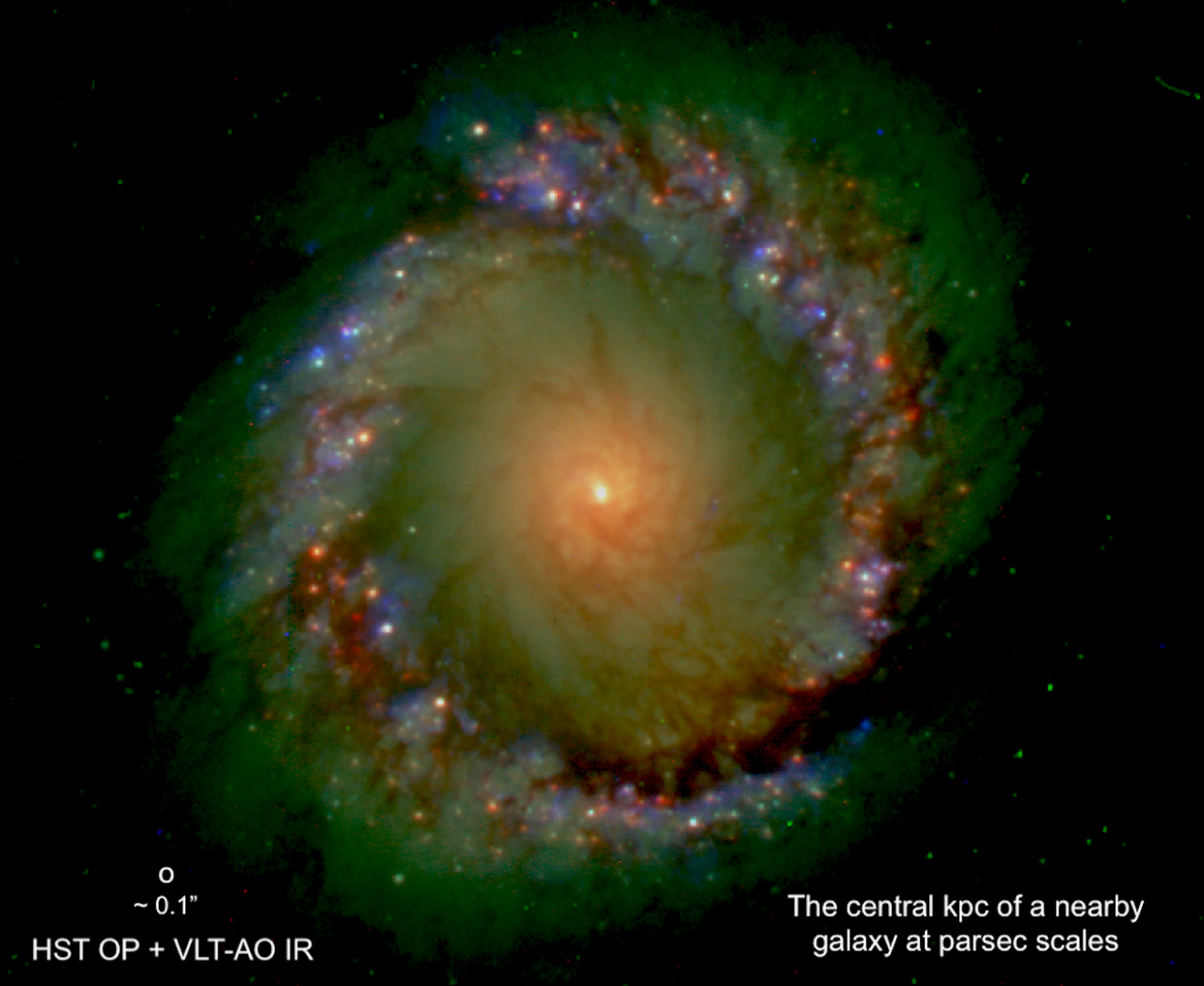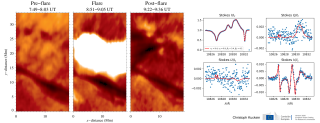Grants related:
General
PARSEC is a multi-wavelength investigation of the central PARSEC of the nearest galaxies. We work on black-hole accretion and its most energetic manifestations: jets and hot spots, and on its circumnuclear environment conditions for star formation. We resort to the highest available angular resolution observations from gamma-rays to the centimetre, and pursue a physical interpretation in the context of computational astrophysics. We also work on development of Adaptive Optics instrumentation for large telescopes. PARSEC projects are:
PARSEC - Black-Hole activity: The galaxies under study span a wide range of nuclear activity, from quiesent to low luminosity active nuclei to the Seyfert and Qso phase. PARSEC investigates the origin and morphology of dust and gas in the central parsec of active and normal galaxies, those being the pre-conditions for the onset of Black-Hole activity. The spectral energy distribution of the central few parsecs is investigated as a function of nuclear activity and accretion disc efficency. The nature and shape of the ionizing continuum are traced with high ionization coronal lines.
PARSEC - Jets and Hot-Spots: PARSEC further studies the most energetic manisfestations of Black-Hole activity: jets and hot-spots, in the PAIS project.
PARSEC -Star-formation: Nuclear star formation spatially resolved at cluster level is uncovered in many of these near galaxies. PARSEC investigates the properties of nuclear dust filaments, lanes and molecular clouds as pre-sites for star formation.
PARSEC - Theory: A physical insight of many of the PARSEC results is done via close collaboration with the Computational Astrophysics group, CAST, of the Munchen University Sternwarte, using numerical and magnetic-hydrodynamic simulations developped by this group.
PARSEC - Instrumentation: PARSEC is also involved in the definition, development and construction of Adaptive Optics instrumentation for 8 -10 m telescopes. PARSEC instrumentation team is building the first Adpative Optics Integral Field Spectrograph and Imaging Camera, FRIDA, for GTC 10 m teelcope.
PARSEC - Outreach: PARSEC is involved in the science and outreach "Vanishing and Appearing Sources during a Century of Observations (VASCO)" project. VASCO searches for vanishing stars, unusual astrophysical transients and extra-terrestrial intelligence. As such, it is a platform for interacting with the general public. VASCO has strong visibility in the media outets via its associated citizen science project.
Members
Scientific activity
Related publications
-
Hα star formation rates in massive galaxies at z˜ 1We present a near-infrared spectroscopic study of a stellar mass selected sample of galaxies at z˜ 1 utilizing the Long-slit Intermediate Resolution Infrared Spectrograph multi-object spectrograph on the William Herschel Telescope. We detect continuum, and the Hα line for our sample, which is one of the better direct tracers of star formation inTwite, Jonathan W. et al.
Advertised on:
22012 -
EX Lupi in quiescenceAims: EX Lupi is the prototype of EXors, a subclass of low-mass pre-main sequence stars whose episodic eruptions are attributed to temporarily increased accretion. In quiescence the optical and near-infrared properties of EX Lup cannot be distinguished from those of normal T Tau stars. Here we investigate whether it is the circumstellar diskSipos, N. et al.
Advertised on:
112009



